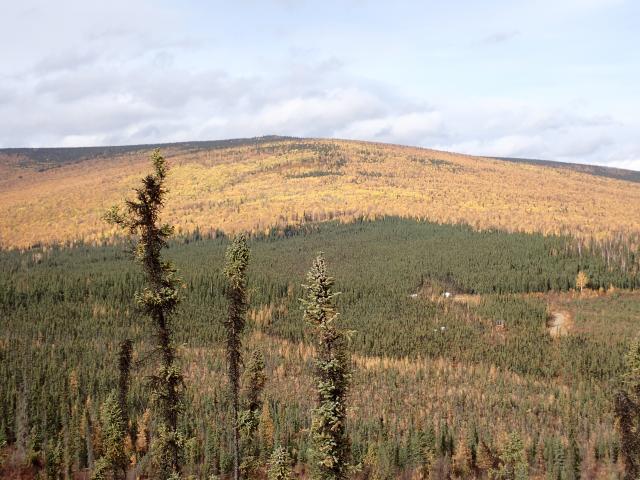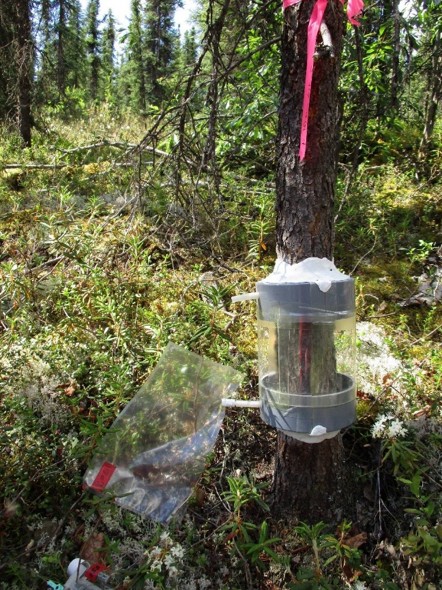Home > International Partnerships > Collaborative Research > Effects of permafrost thaw on stem CH4 emission
Update:July 22, 2025
Main content starts here.
Effects of permafrost thaw on stem CH4 emission
1. Partners
International Arctic Research Center, University of Alaska Fairbanks
2. Research Periop
FY 2024–2027 Grant-in-Aid for Scientific Research (KAKENHI)
3. Lead Researcher
NOGUCHI, Kyotaro (Department of Forest Soils)
4. Background
Permafrost accumulates huge amounts of organic carbon. However, it is considered that the permafrost can be a huge source of greenhouse gases (GHGs) such as CO2 and CH4, if permafrost degradation occurs by climate warming. In particular, increment of CH4 emission can be a serious problem because warming potential of CH4 is 30 times as large as that of CO2. Although it is well known that CH4 is produced by methanogens and emitted from ground surface, there is also a pathway from roots to stems of trees, through which the CH4 is emitted from the surface of tree stems (stem CH4 emission). However, almost no information is available for the stem CH4 emission in permafrost forests up to now.
5. Research Goal
This study aims to evaluate stem CH4 emission quantitatively in permafrost forests and to elucidate effects of permafrost thaw on the CH4 emission.
6. Research Strategy
Stem CH4 emission rates will be estimated in permafrost black spruce (Picea mariana) forests in Interior Alaska. In addition, the investigation will be conducted in sites where permafrost thaw has occurred by below-ground temperature rise by artificial heating treatment or by wildfire. Taken together, effects of permafrost thaw on the stem CH4 emission in permafrost black spruce forests will be elucidated. Permafrost forests cover more than 20% of boreal biome. Thus, it is expected that this study would contribute to better estimate GHG emission in terrestrial ecosystems and to predicting the GHG dynamics in the future.

Figure 1: A landscape of forest ecosystem in Interior Alaska. Black spruce (Picea mariana) forests are distributed on lower slope or lowland underlain with permafrost.

Figure 2: Gas sampling for measuring stem CH4 emission.
Copyright © Forest Research and Management Organization. All rights reserved.
